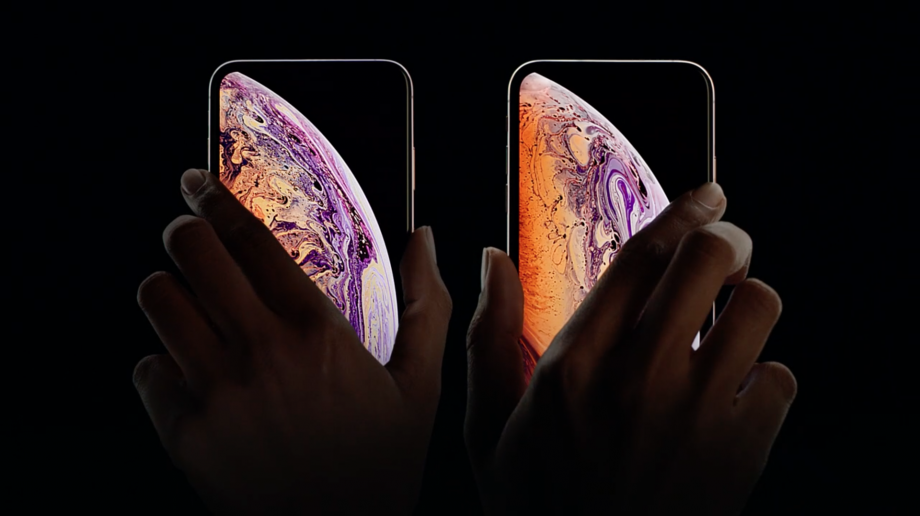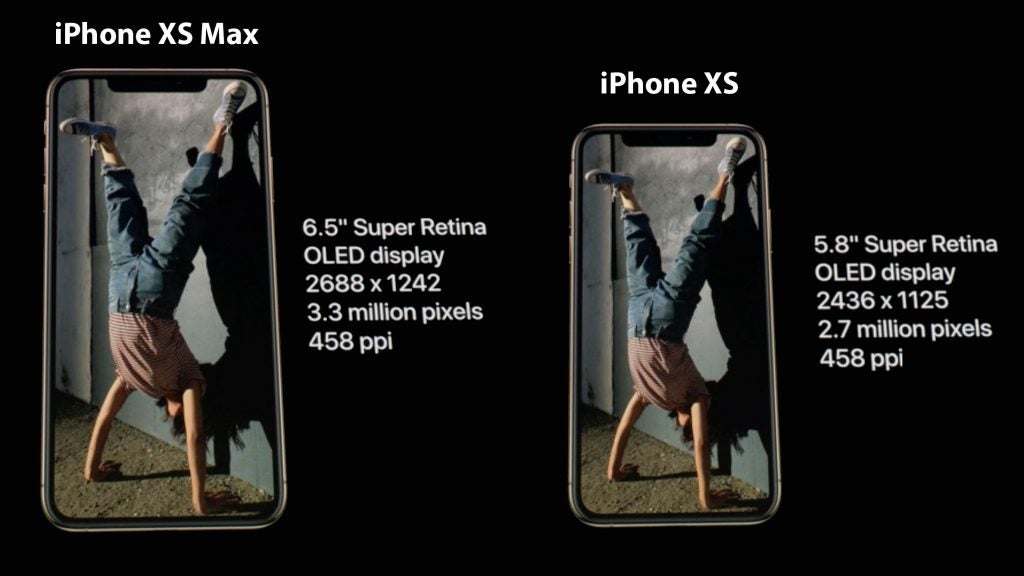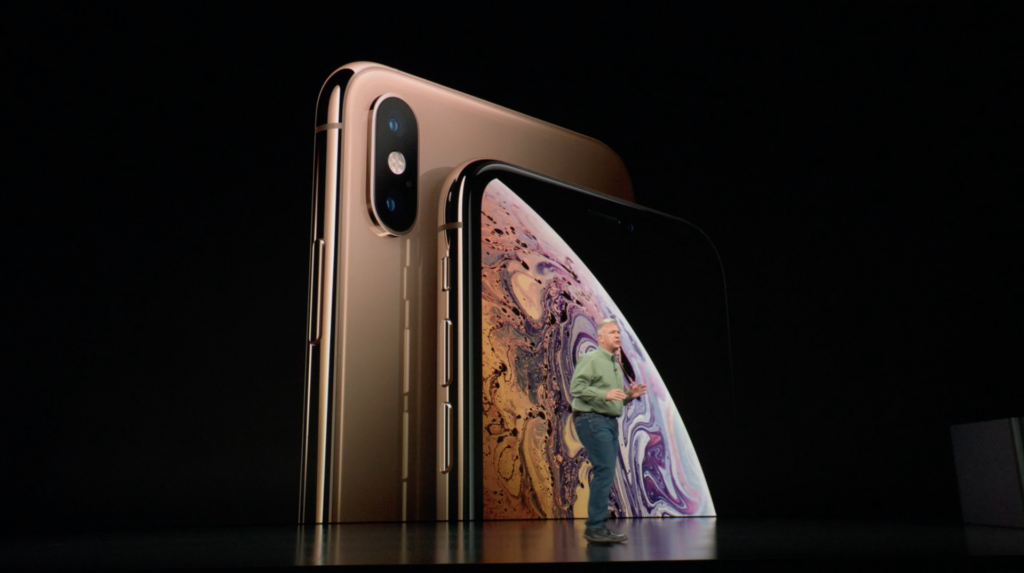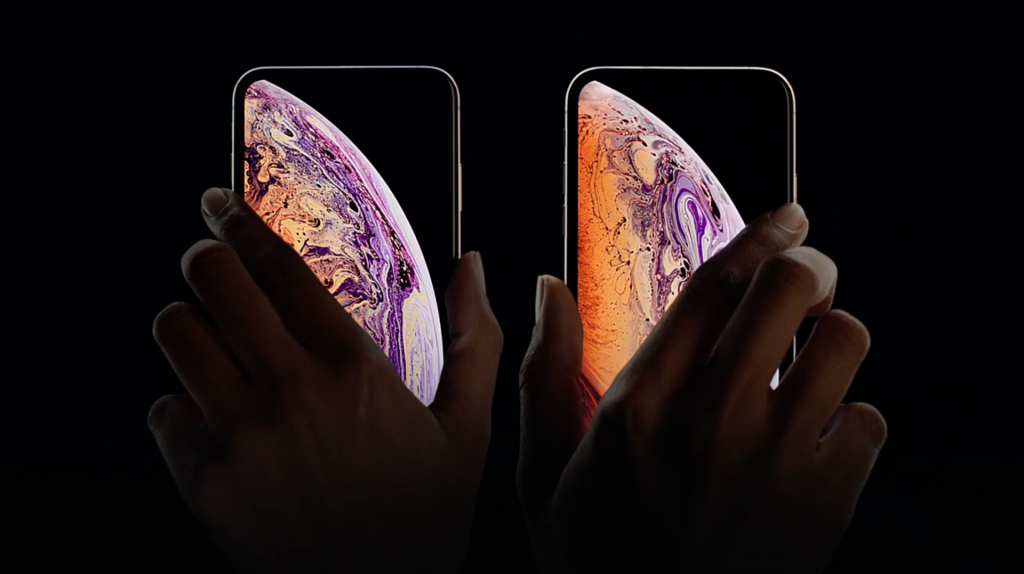iPhone XS vs iPhone X: Worth the upgrade?

Should you be updating your iPhone X to the iPhone XS?
Pitting the iPhone XS vs iPhone X, but should you be getting ready to upgrade?
Replacing the iPhone X is the iPhone XS – a tweaked version of the notch-toting £999 device introduced 12 months ago.
We’d thought we’d seen the last the of ‘S’ titled phones when Apple skipped the 7S and went directly to the iPhone 8, but Apple has resurrected the traditional mid-cycle upgrade once again.
But what exactly is new here, and should you really be considering an upgrade to that wallet-busting phone already? Let’s take a look.
iPhone XS vs iPhone X – Design
After opting for a very similar overall design for its handsets for years, the changes made with the iPhone X were obvious from first glance.
It ditched that chunky bezel, pushed the display right out to the corners, and replaced the metal rear with one constructed from glass. Immediately, it felt like a much more premium device that matched the new high price.
Related: Best smartphones

Having been through a radical design overhaul last time, Apple has decided to keep with those changes with this new lineup of phones. There were rumours we’d see a smaller ‘notch’ (the indent that juts in from the display) or possibly an even slimmer bezel, but neither of these has come to pass.
Related: iPhone XR vs iPhone XS vs iPhone XS Max
Like the iPhone X, the iPhone XS is constructed from a mixture of glass and stainless steel. New for the XS is a gold hue. Initial pictures suggest a fairly subdued gold colour covering the stainless steel band. You’ll be able to pick up the iPhone XS in black and silver, too.
[videoai]Other iPhone X design traits remain: the elongated lock switch, lack of a headphone jack and IP67 water-resistance.
iPhone XS vs iPhone X – Specs and features
As is usual with ‘S’-series upgrades, the real differences come by way of the specs and internal upgrades rather than visual differences.
The most significant of those is the switch to a new SoC – the silicon that powers the iPhone. While the iPhone X ran the A11 Bionic chip, the iPhone XS upgrades to the A12 Bionic. As is typical with these improvements, Apple showed off multiple graphs detailing the speed improvements that will be experienced when it comes to everyday performance and graphics. Gameplay shown during the event showed off improved shadows and visuals.
This is a 7nm chip and, as such, efficiency will be better than that of the 10nm A11 Bionic. Hopefully, this will lead to improved battery life without a knock-on effect on performance. Inside this new chip you’ll find a quad-core GP, a 6-core CPU and a dedicated neural engine.
Related: Best iPhones

Another upgrade that wasn’t specifically mentioned during the unveiling was RAM. But if the rumours are to be believed, the iPhone XS has 4GB of RAM, which is up from 3GB. We’ll likely have to wait until the iPhone XS is available to buy to confirm the allocation.
It was with the iPhone X that Apple made the switch to OLED panels. Previous iPhones, and even the iPhone 8 and iPhone 8 Plus, used LCD tech for its display. OLED tends to offer deeper colours, better contrast and perfect blacks. As such, you get a much richer experience whether you’re looking at pictures or watching videos. The difference between the LCD on the iPhone 8 Plus and the OLED on the iPhone X is apparent, showing off how much better the tech truly is.
Related: iPhone XS vs Galaxy S9
Apple has stuck with a 5.8-inch OLED for the iPhone XS and it has also introduced a second, larger model with a whopping 6.5-inch OLED, the iPhone XS Max. Arguably, the biggest differentiator with the new iPhone XS is the option to up the screen size.
Resolution remains the same at 2436 x 1125, and there’s still support for HDR10 and Dolby Vision, plus the wide P3 colour-gamut.

The iPhone XS is still home to a notch on the device’s display. This small cutout houses all the tech for the front-facing camera and the sensors required for Face ID to function. Of course, as is the case with the iPhone X, the only biometric method to unlock the iPhone XS is with your face. Apple said the Face ID sensor used here is faster in every way than the one used in the iPhone X.
iOS 12 was unveiled during WWDC in June and it will come installed on all versions of the iPhone XS. iOS 12 doesn’t offer a huge overhaul for the software, but it does benefit from a couple of new features. These include much-improved notifications and a Screen Time feature that’s supposed to help you monitor your phone usage.
Related: iPhone XR vs iPhone X
Battery life is always difficult to gauge until we’ve properly tested and reviewed a device, plus as usual, Apple hasn’t specified the size of the cell inside the iPhone XS. It does say you’ll get 30 more minutes of use with the iPhone XS when compared to the iPhone X.
iPhone XS vs iPhone X – Camera
When it launched in 2017 the iPhone X camera was one of the best on the market. However, a year on and it feels like an update is needed. The 12-megapixel f/1.8 main sensor is paired with a secondary 12-megapixel f/2.4 sensor (both with OIS) and even though it takes good snaps, it can’t match the Pixel 2.

With the iPhone XS, Apple is upgrading its camera system. It still has a dual 12-megapixel sensor with f/1.8 aperture on the main wide-angle sensor and f/2.4 on the telephoto, but the sensors are completely new and there’s a new ISP inside the A12 Bionic. There’s also a faster 7-megapixel selfie camera on the front.
The biggest upgrades are in the software, though. There’s Smart HDR which improves highlight details and shadows and the power of the A12 Bionic chip improves post-processing. You can also finally alter the depth of the field effect after you’ve taken the photo.
Video on both phones can be captured at 4K, however the iPhone XS adds in stereo-sound recording.
iPhone XS vs iPhone X – Price
iPhones of past have never been cheap, but the iPhone X took things to the next level. Prices for that device started at £999/$999 for the 64GB and rose to £1149/$1149 for the 256GB version – comfortably the most expensive iPhone to date.
The iPhone XS is the same price iPhone X, with prices starting at £999/$999 for the 64GB. £1149/$1149 for 256GB and £1449/$1449 for 512GB. That’s a seriously expensive iPhone.
Early verdict
As is usual with ‘S’ upgrades, most of the changes here are internal rather than visual. Considering the iPhone X was already an attractive device, this isn’t an issue here. The updates to the camera on the XS are welcome, as are the improvements to speed. Nevertheless, we’ll have to fully review the iPhone XS before we can say for certain how much of an upgrade it really offers.


